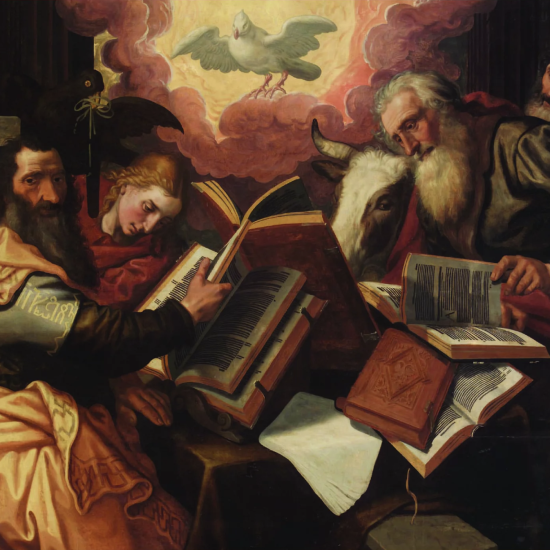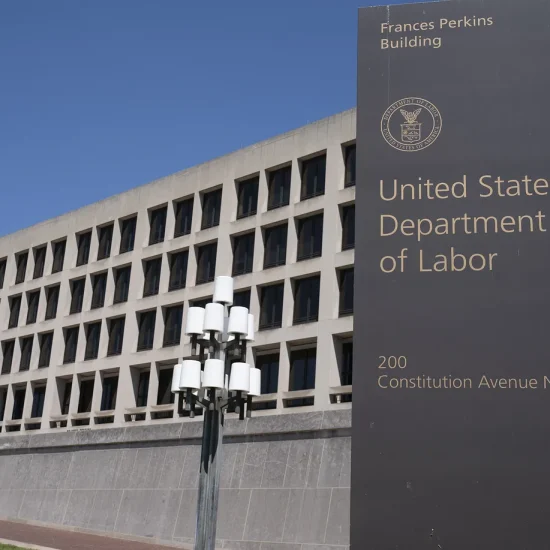

HOPE RESTORED: Biblical Imagination Against Empire (The Walter Brueggemann Library). By Walter Brueggemann; Davis Hankins, Editor. Louisville, KY: Westminster John Knox Press, 2023. Xix + 177 pages.
Hope is a concept that seems rather elusive at the moment. People are feeling vulnerable and fearful about the future. It doesn’t help that some politicians believe that the world is going to the proverbial hell in a handcart. However, if we approach reality from a different angle than many are approaching, that is with a biblically infused imagination that is ready, willing, and able to take on the empires of our world, then hope is truly possible. This is the message that Walter Brueggemann delivers in the book Hope Restored: Biblical Imagination Against Empire.

Robert D. Cornwall
Walter Brueggemann is one of the best-known and respected biblical scholars of our day. He is nearing the end of his life, but new material, some of which is repackaged, continues to emerge. These new additions to his library are welcome gifts for preachers, scholars, and even the many lay people who have encountered him in his many books, sermons, lectures, and other presentations. Even in his 90s, Brueggemann continues to invite us to attend to the biblical witness. He has spent his life exploring and expounding on the Bible, especially the Old Testament. He is, however, not only a biblical scholar of note but he is committed to the belief that the Bible is a witness to God’s realm, a witness we would be wise to heed.
Hope Restored is another volume of The Walter Brueggemann Library published by Westminster John Knox Press. As with the other volumes in this series, it is edited by Davis Hankins, Associate Professor of Religious Studies at Appalachian State University. These volumes are intriguing because Hankins has taken previously published materials and crafted them into new books that seamlessly present anew Brueggemann’s ideas about the Bible, the Church, and the World. Hope Restored, which appeared in 2023, focuses on the theme of hope as it appears in the Old Testament writings. In the first chapter of the book, which is titled “The Bible as Literature of Hope,” Brueggemann writes that “The Jewish Bible, the Christian Old Testament, is fundamentally a literature of hope; yet, at least in Christian circles, the Old Testament has such a caricatured reputation as a tradition of law, judgment, and wrath.” Because of this caricature, Brueggemann wants to explore what seems to be an odd phenomenon and a problem for the Western world, but which is “a great resource for our present cultural situation” (p. 3). In other words, Brueggemann wants to disabuse us of this view of the Old Testament, something he does in typical Brueggemann style. Hankins has brought this vision to life utilizing previously published materials in such a way that one would assume this is new material.
Hankins divides Hope Restored into five parts or sections. Most of the book engages in biblical exegesis, interpretation, and proclamation. In the process he draws from Brueggemann’s many sermons, which are available in published form from WJK Press).
Part One is titled “Introducing Biblical Hope.” This section contains two chapters that set the tone for what comes in the chapters that follow. The first chapter, which I’ve already mentioned, focuses on “The Bible as Literature of Hope.” He notes that the Western intellectual tradition does not lift up hope. Rather it focuses on order. It is a tradition of order that seeks to discern, understand, decipher, know, and, if possible, master and control. He offers the biblical tradition as an alternative, one that offers hope. He brings this chapter to a close by declaring: “Insofar as despair marks the current social environment of faith, to that extent hope is a distinctive mark of faith with dangerous and revolutionary social potential” (p. 13). The second chapter is titled “Living Toward a Vision.” This vision announces “a better world of justice and equity,” but this vision of hope is open and provisional. The natural setting for this vision of hope is found among those who process their grief in the community. In setting out this open and provisional vision of hope, Brueggemann also addresses the enemies of hope, which include muteness, fulfillment, and technique. While “despair may be a critical fact of our common life,” such that we may do “crazy, inhumane, and ruthless things,” the biblical tradition of hope stands as an alternative. However, this vision requires imagination (p. 26).
Part two (Chapters 3-4) focuses on “The Torah: Hope in Promises and Expectations.” In Chapter 3 Brueggemann speaks of “The Open-ended Hope of the Torah.” The focus here is on the five books of instruction, which provide the normative tradition that Jesus drew upon. Torah provides open-ended instruction that moves us from Creation to the Land of Promise, but there is a tension here between “unconditional entitlement” and “the condition of obedience” (p. 43). With that tension in mind, Brueggemann picks up in Chapter 4 the question of “God’s Promises and Provision: Exegetical and Homiletical Focus.” This pattern of exegesis and homiletics will appear in each of the following sections. Brueggemann begins with exegesis, exploring the concept of hope as found in the ancestral stories. The focus is on the Genesis stories that speak of God providing for and testing God’s people. Then he offers homiletical insight and instruction.
If Part 2 focuses on the Torah, Part 3 focuses on the prophets of the Old Testament. It is titled “The Prophets: Hope for Restoration.” Here again, we have two chapters. Chapter 5 carries the title “The Prophets: Deep Memories, Passionate Convictions, and New Hopes.” Here Brueggemann provides introductory material on the entire prophetic tradition. Of this tradition, Brueggemann writes: The prophetic canon is a literature that articulates Israel’s faith and practice in the rough-and-tumble of historical reality. It is an exercise in rereading the history of Israel and the history of the world according to the gifts and requirements of the God of the Torah” (p. 65). The biblical texts included here are the Former Prophets (Joshua through 2 Kings) and the Later Prophets, which include all the remaining prophetic books except Daniel. Once again, he lifts up the biblical witness to hope through the efforts of the biblical prophets. Then in Chapter 6, he focuses on the accounts in Second and Third Isaiah: “Hope for Well-Being in Second and Third Isaiah: Exegetical and Homiletical Focus.” He writes of Isaiah as a book, that “in a complex way over a long period of time, is a great lyrical articulation of a city that is humiliated in deep failure and then is exalted in glorious, possible well-being” (p. 90).
In Part Four we turn to “The Writings: Hope of Transformation.” In this section, Brueggemann/Hankins offers us three chapters. The first 2 look at the Book of Daniel. This is a good reminder that in the Jewish tradition, Daniel is not included as one of the prophets, but as one of the writings, a collection of materials that are discussed and described in Chapter 7. Daniel is divided into two parts, with the first several chapters offering a narrative of the life of Daniel and his companions, while the latter portion provides an apocalyptic vision. The first of these chapters (Chapter 7) focuses on the narrative portion of Daniel. Titled “Hope Transformed in the Writings: Exegetical Focus” (Daniel 2-4). This is the narrative portion of Daniel, where we see how Daniel and his companions resist the Empire but thrive and gain positions of influence. Then in Chapter 8, titled “Hope in God’s Future, Grounded in Holiness (Daniel 1; 7-12), Brueggemann takes a look at the apocalyptic vision of Daniel as a word of hope to a people in trouble. He writes that “Apocalyptic is a rhetorical strategy for articulating deep hope that lies beyond the vagaries of historical reality. This is not a world-escaping hope; rather, it is a summons to obedience that refuses accommodation to the rulers of the old age” (p. 128). Then Chapter 9 is titled: “The Nagging Hope of the Lament Psalms: Exegetical and Homiletical Focus.” Here Brueggemann reveals a “recurring pattern of speech [that] features the covenantal partner drawing God into trouble with a hopeful expectation that if God can be mobilized, the trouble can be assuaged!” (pp. 133-134). As you can see from the layout of the book to this point, Brueggemann is following the Jewish canonical listing, such that Daniel joins the Psalms in the final section of the Hebrew Bible, known as The Writings.
Part 5 offers a concluding chapter (Chapter 10) to the book. It is titled “Embracing the Transformation: A Comment on Missionary Preaching.” This chapter reminds us that Brueggemann can do scholarly exegesis, but he is also a preacher and a teacher of preachers (in a way). Ultimately, we might want to think of Hope Restored as being a missional book, since it draws on the Old Testament story to tell a story of hope, a story that requires on our part a biblical imagination, dare I say a prophetic imagination so that we can offer a message that speaks to God’s mission in the world. He writes that this “mission is an assertion of new reality wrought by God (Gabe, or gift), and an invitation to receive and participate in the new reality (Aufgabe, or task)” (p. 153). In this concluding chapter Brueggemann essentially sums up the message delivered in the previous chapters, even if this chapter is a reproduction of another published essay on missional preaching that offers the listener an account of that new world that is described in the biblical story.
While the material in HopeRestored, as well as the other books in the series, might not be new, the way they are presented is new. Since Hankins has edited these materials into a seamless whole, we have been given something of value. Brueggemann has had a long and distinguished career, and his words continue to resonate. That is especially true if you are a preacher. Knowing that the message we encounter in Scripture, especially in the Old Testament, is hope-filled, even if not yet complete, it continues to offer us a word of encouragement. Thus, preachers who read Hope Restored have been given a gift worth receiving with joy. There, might the church’s preaching offer a word of hope to a world that often experiences despair.
This review originally appeared on BobCornwall.com.
Robert D. Cornwall is an ordained minister in the Christian Church (Disciples of Christ). Now retired from his ministry at Central Woodward Christian Church (Disciples of Christ) of Troy, Michigan, he serves as Minister-at-Large in Troy. He holds a Ph.D. in Historical Theology from Fuller Theological Seminary and is the author of numerous books including his latest “Second Thoughts about the Second Coming: Understanding the End Times, Our Future, and Christian Hope” coauthored with Ronald J. Allen. His blog Ponderings on a Faith Journey can be found at www.bobcornwall.com.






